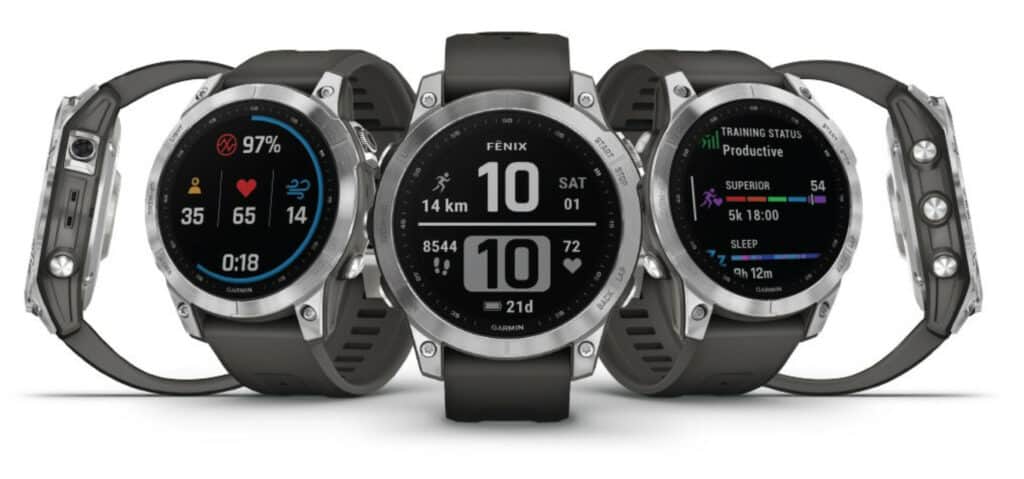If you use a Garmin watch you will be well aware of its Stress Level Feature found inside Garmin Connect. But how does it work and, more importantly, is it accurate? Let’s find out…
Most Garmin watches come with the ability to monitor your body’s stress levels. If you wear the watch all day and night, you will get daily stress readings which you can view inside Garmin Connect. Your stress levels, however, may vary – no two people are the same. But is it a good metric for analyzing your overall health?
The short answer is, yes, it is a good metric to have to hand. If your stress levels are constantly high, something is almost certainly amiss. You could be ill, you could be working too hard, or you might be in distress about something – all of these things will elevate your stress levels. And stress, as we all know, is not a good thing.
How Does Garmin Measure Stress?
Most Garmin watches come with a heart rate sensor. This heart rate sensor takes measurements around the clock. The stress level is derived from this data. Specifically, the interval between each heartbeat. This interval is regulated by the body’s nervous system. Less variability between beats equals higher stress levels, while an increase in variability indicates less stress. And this is what makes up your daily stress readings.

In addition to this, some of Garmin’s watches will prompt you when your stress levels get too high. I’ve had this notification MANY times and it is usually the day after a big night out.
Thanks, alcohol!
I also got a daily alert that my stress levels were high when I had COVID. Again, this tells you that Garmin is fairly accurate in predicting stress in the body. Booze and COVID both stress the body. Big time.
And all of these high stress levels will massively impact your sleep quality and overall sleep score, resulting in a low rating inside Garmin Connect.
Garmin Stress Level Numbers Explained
Inside Garmin Connect, you’ll find a graphical breakdown of your stress levels throughout the day. If you’ve been wearing your watch for longer, you can view stress levels over a week, a month, or even a year. This is a good way to stay on top of things and monitor what’s triggering your stress levels.
If you have a meeting once a week with your boss, and your stress levels peak just before, maybe it is time you had a chat with your boss about the stress they’re causing you. Or, if you’re going to the pub once a week and maybe drinking too much, maybe knock that on the head – or switch to lighter beer.
I’ve been wearing and using Garmin watches for years and the Stress Level Numbers are scarily accurate. Hungover? High-stress levels. Watching your first child be born? Stress levels through the roof. Emergency landing in Barcelona airport? Extremely high-stress levels. In my experience, Garmin is spookily accurate in its ability to pick up on stress levels.
How To Analyze Your Stress Levels in Garmin Connect
Garmin breaks down stress levels from 0 to 100, with 0 being no stress whatsoever and 100 being super-stressed. Here’s a quick breakdown of how these numbers relate to overall stress levels:
- 0–25: Resting state
- 26–50: Low stress
- 51–75: Medium stress
- 76–100: High stress
If I’m eating right, getting out for a run most days, and laying off the booze in the week, my stress levels on average are usually around 40-45. This is the ideal spot, in my opinion. My body isn’t stressed, things are working fine, and my heart is behaving itself because I’m treating it nice.
Over Christmas, when I got COVID and drank all the wine, my daily stress levels were between 65-80 for over a week. This is not good. This is not where you want to be. But it did prompt me to get a COVID test, as my levels were consistently higher than normal. Had I not been wearing my Garmin, I probably wouldn’t have had a test as I was pretty much asymptomatic, save for some slight tiredness (which I initially put down to going running with a hangover).

For me, this is a testament to just how useful a Garmin watch is in practice. They’re not just useful for tracking your runs and cycling sessions; they’re also excellent tools for getting to know your body better. For instance, I now know – thanks to Garmin’s stress data – that I cannot tolerate coffee anymore. I can do two cups. Max. Any more and my stress levels spike and stay spiked for the remainder of the day.
But back when I was in my early-20s, I could drink coffee by the gallon, all day and all night. This type of data is invaluable if you’re trying to be more health-conscious. If you’re paying attention to your stress levels consistently and watching what you’re putting in your body, you will quickly spot things that cause problems or raise your stress levels. For me, it was a coffee. And I wouldn’t have known this with my Garmin watch. Just as I probably wouldn’t have known that I had COVID either.
Oh, and the Garmin watch I use – if you’re interested – is the Garmin Fenix 6 Pro. You can pick one up for a heavily discounted price now (the Fenix 7 series just launched), so if you’re after one of the best sports tracking watches on the planet, I highly recommend the Fenix 6 Pro – it is a brilliant watch with amazing battery life and market-leading health metrics.
I literally couldn’t live without mine. It has become an invaluable tool for tracking my runs and monitoring my overall well-being.


